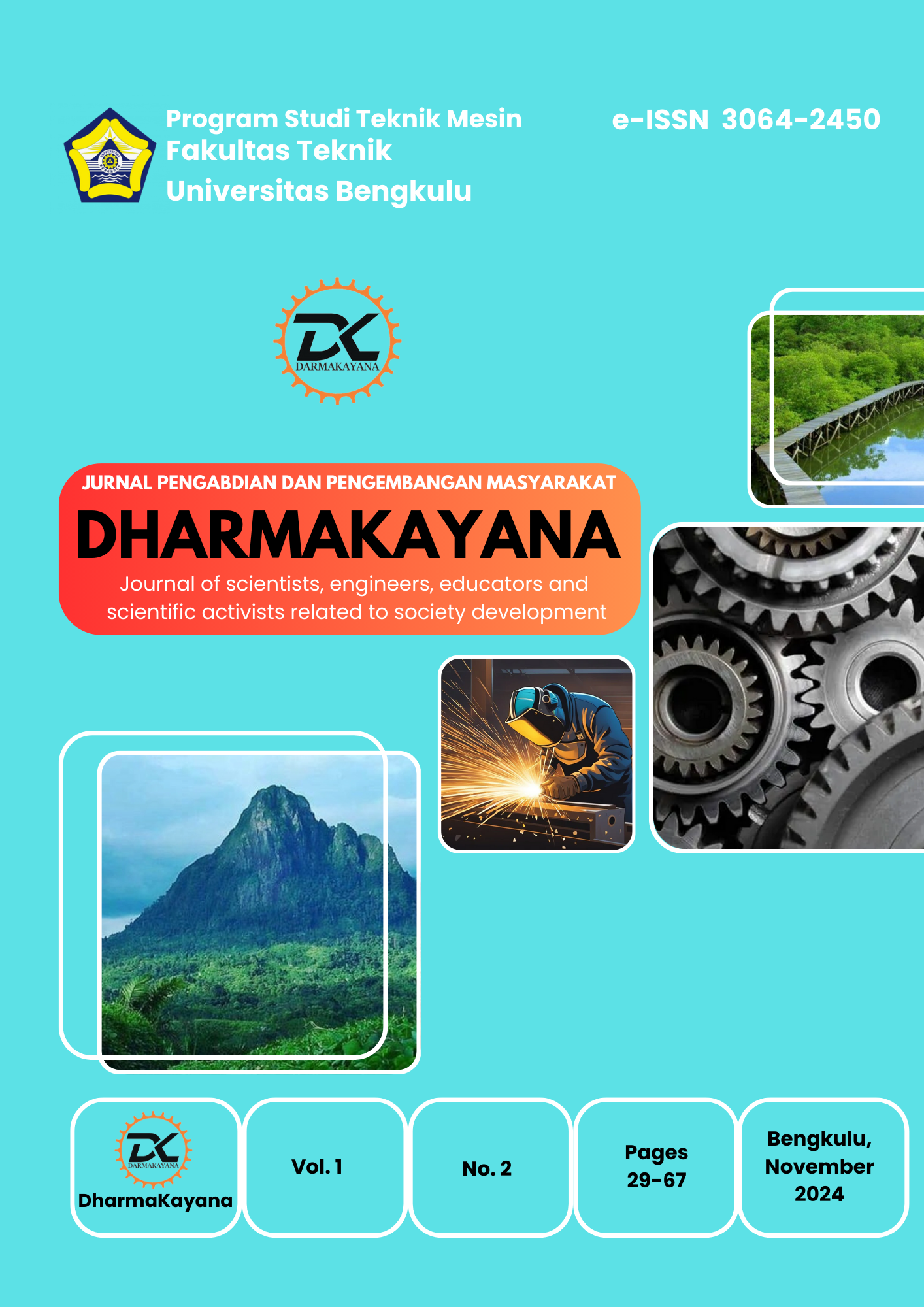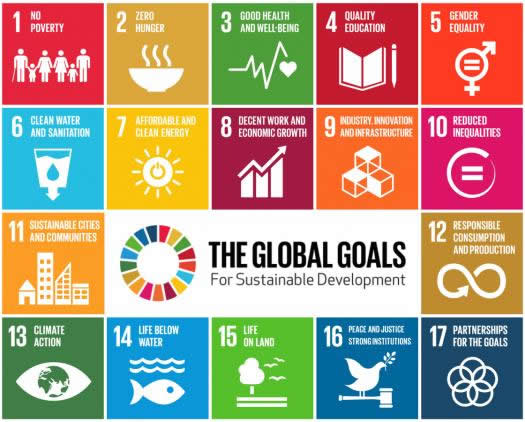About the Journal

DharmaKayana (DK) is professionally managed and published by the Mechanical Engineering Study Program, Faculty of Engineering, Universitas Bengkulu in assisting academics and practitioners to disseminate the results of their community service.
The Mechanical Engineering Study Program, Faculty of Engineering, University of Bengkulu plays an active role in the publication of quality community service results in the fields of engineering and technology. In the Dikti guidelines, journal management is one of the authorities of universities. Therefore, this journal is present to carry out this task.
DharmaKayana (DK) is a blind peer-reviewed journal dedicated to the publication of quality community service results in the fields of engineering and technology but is not implicitly limited.
All publications in the DharmaKayana (DK) journal are open access which allows articles to be freely available online without any subscription.
DharmaKayana (DK) is a national journal, dedicated to the publication of quality community service results in the fields of engineering and technology but is not implicitly limited and free of charge in the Submission process.
DharmaKayana (DK) publishes papers periodically twice a year, namely in May and November.
Dharmakayana: Journal of scientists, engineers, educators and scientific activists who care about society. In accordance with the name Dharmakayana, consisting of two words (Dharma, in its original meaning, namely universal natural law and its derivatives that apply to/are applied to anything and anyone; Kayana means generous, kind, and noble), Dharma kayana takes on the mission of being a messenger to the world through articles containing science, research, design, reports, proposals or short communications about What is done/happens (On What Societies Do) and about how it is done (On How Societies Do What They Do). The first: On What Societies Do, related to educational innovation (engineering), promotion of diversity (gender), interdisciplinary activities, development of concern, and others. The second: On How Societies Do What They Do contains issues, problems, obstacles faced and overcome, either through cooperation between communities, university-community, academy-industry, community-informal education, or individuals, related to strategies to increase the number of female students in engineering, enriching craftsmen (engineering) with tools and work aids, e-learning, learning workshops (engineering), development of work and safety modules, simulations, and others. The article above is expected to be related to one, two or more of the seventeen issues in the Sustainable Development Goals (SDGs), namely (1) No Poverty; (2) Zero Hunger; (3) Healthy and Prosperous Lives; (4) Quality Education; (5) Gender Equality; (6) Clean Water and Adequate Sanitation; (7) Affordable and Clean Energy; (8) Decent Work and Economic Growth; (9) Industry, Innovation and Infrastructure; (10) Reduced Inequality; (11) Sustainable Cities and Settlements. (12) Responsible Consumption and Production; (13) Addressing Climate Change; (14) Marine Ecosystems; (15) Land Ecosystems; (16) Peace, Justice and Resilient Institutions; (17) Partnerships to explain the Objectives.






